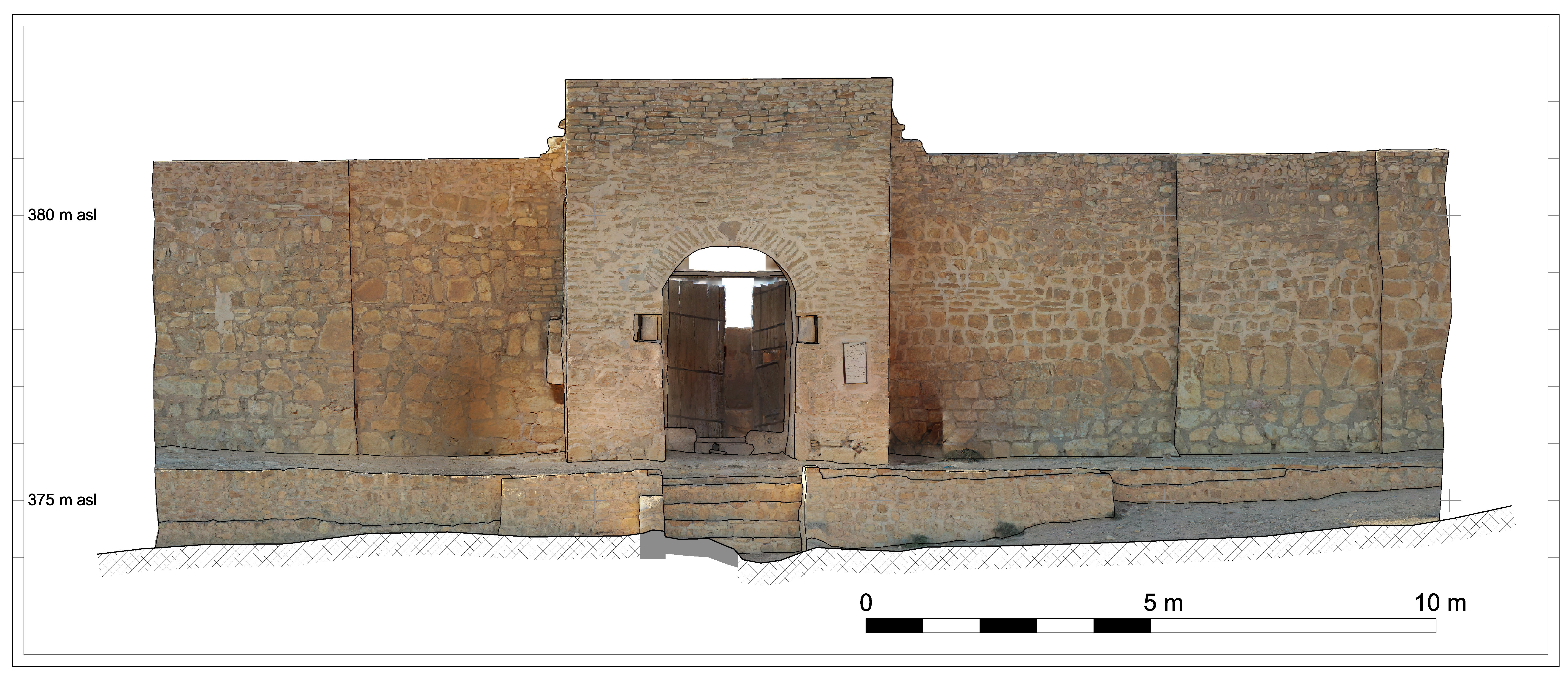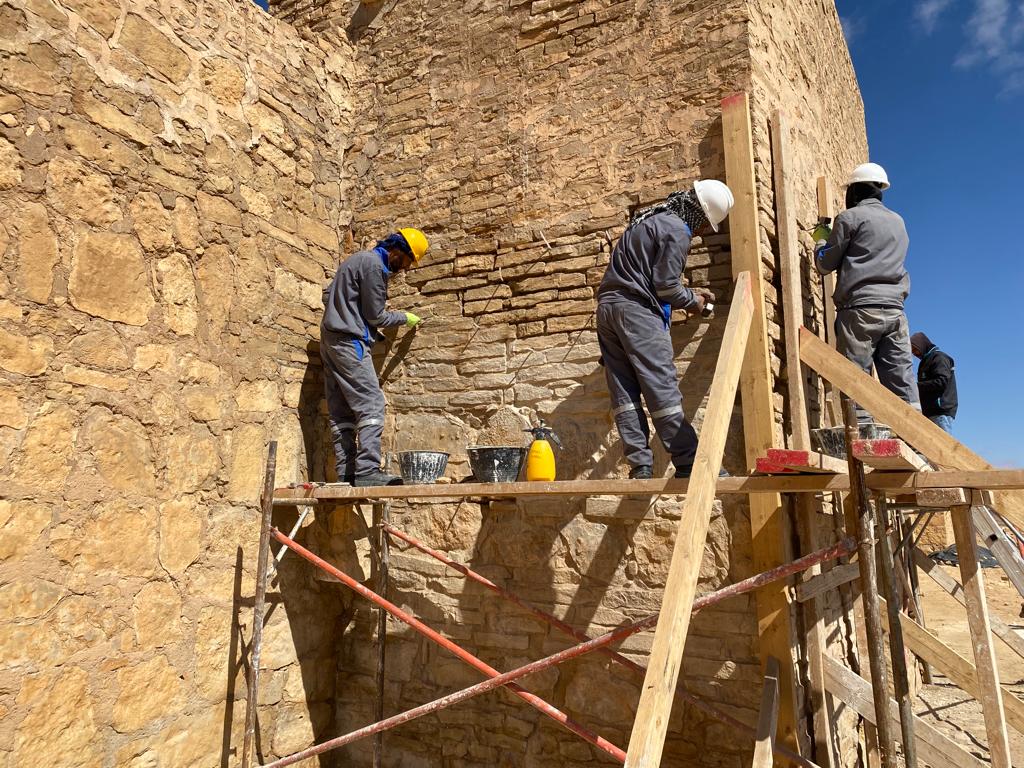
The gasr is an irregular square 50 by 45 m wide, NW to SE oriented, fitted to the edges of the south-eastern and south-western slopes. The perimeter of the walls is about 200 meters long and has a single entrance in the centre of the south-eastern side. The walls are made up of a curtain of horizontal axes of irregular blocks bound with mortar, for an average height of 5 m, although this height has been reached in many sections thanks to a recent restoration. In the lower part the blocks used are on average larger with the insertion of smaller elements in the upper half. The entrance tower is almost entirely made with elements cut like low plinths with the exception of the lower part. The vault is made with a radial pattern of similar elements and the key with a squared block placed in a diamond shape. The springers of the arch are enriched with two sections of small pillars composed of a stack of elements stuccoed in the modern restoration. The intrados is decorated in relief with the aforementioned inscription and vegetal and geometric elements. The upper part of the entrance and the walls was heavily restored in the nineties, as can also be deduced from the photos prior to the restoration. The perimeter wall preserves a characteristic saw-tooth arrangement in the layout at intervals of 3.30-3.70 m. Each sector of the curtain is not artfully embedded in the adjacent sector, causing cracks and other conservation problems to the walls. The reason for this construction technique is far from clear. The gasr is arranged around a large rectangular courtyard about 30 by 38 m wide. The cells, ghouraf, are arranged all along the four sides of the gasr, only the 60 ones on the ground floor are preserved, but some elements and the stairs along the facades attest to the presence of at least a second floor for a total of about 120 cells. Considering the abutting and/or the insertion solutions attested at the four corners of the gasr, it seems evident that the construction of the four sides are not contemporary, or that the cells were built starting from the centre of each side to reach the corners at different times. The cells are vaulted, each one is different from the others for internal division, presence of mezzanines or other infrastructures; the dimensions also vary in width between 1.10 and 2.30 m. The decoration of the vaults is preserved only in some cells, especially in the northern part.


After a restoration carried out in the 90s, many parts of the ancient wall circuit, including the entrance with the famous inscription, are today at risk due to the building's construction technique, where the leaching of the internal binders had not been taken into consideration. As part of the project, a training was organized for a team of INP technicians who performed a conservation intervention on the monumental entrance and on the decoration of its arch. Fluid mortar was injected into the core of the masonry until it was saturated in order to restore homogeneous cohesion to the masonry mass compromised by the presence of voids. The operation began from the lower part of the walls to go up to the crests. The injections were preceded by the removal of the old grouting and replacement with a new pointing of the stone facades. The stucco of the intrados of the entrance arch was analysed in the laboratory to determine its components and permeability. For the consolidation treatment, it was chosen the ammonium phosphate, a product widely tested for artefacts in gypsum or limestone. The solution has been applied by brush and through a soaked compress in paper pulp. The trainees can now work autonomously by applying the same methodologies to other parts of the building and in other buildings that present the same critical issues.

